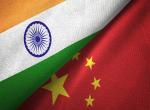President Obama win in 2008 was a truly historic occasion as the election of a non-white to the presidency represented the far reaching social change that had occurred relatively undetected in the American society over the years. His second win consolidates that social transformation. This does not mean, however, that racism has vanished from America’s social landscape.
Many Republican whites could never fully reconcile themselves with Obama in the White House. The right wing swing of the Republican party after 2008 resulted in political gridlock in the US Congress, especially after the Republicans won a majority in the House of Representatives. This was depite Obama’s genuine efforts to reach a bi-partisan consensus on vital social and financial legislation.
With this second defeat, bitterness in the Republican camp is set to become more acute. This election has more sharply polarized the country, with white, middle-aged, rural America broadly pitted against the Blacks, Hispanics and young, urban whites. With the Republicans retaining their majority in the House, the political gridlock will continue, making governance in America more difficult. The “fiscal cliff” looming in January 2013 will severely test Obama’s second presidency.
Obama’s victory is not as “overwhelming” as some claim. His share of the electoral vote, and more particularly, the popular vote has come down, the first time this has happened in 100 years for a second term president. Obama had disappointed his democratic base early into his first presidency by seeking compromises on legislative measures he had promised and his failure to withdraw quickly from Afghanistan etc. In foreign policy, despite an unwarranted Nobel Peace Prize, he broadly continued Bush’s end-of-the-second-term policies. Antipathy towards Romney rather than a full endorsement of Obama seems to have affected the choice of voters.
For India, Obama’s re-election provides continuity. We are familiar with his attitude and policies towards India. He has a good personal rapport with our Prime Minister. His initial views on Pakistan, Kashmir, terrorism, Afghanistan and China were problematic for us. But he has learned on the job, and today US policies on all these issues are more congenial for us. The US now considers India as the lynchpin of its “re-balancing” towards Asia. This shows the direction of US thinking on its strategic partnership with India.
The India-US bilateral agenda pursued in Obama’s first tenure is richly textured. The opportunities and the obstacles are known to both sides, with realization that the pace of implementation will be determined by political compulsions. The relationship lacks excitement but is steady. Differences over Iran, Libya and Syria have been delicately balanced, which a Romney victory could have unsettled.
On outsourcing Obama has remained negative, undeterred by larger political considerations. Visa fees hikes and visa denials to Indian service providers is an irritant. Our IT industry, chary of Obama’s win, fears the president will put tax penalties on US firms that outsource jobs. Obama has alienated the most pro-American segment of the modern, knowledge-based entrepreneurial class in India. Bangalore, a hi-tech job creating symbol of India-US ties in many ways, is presented parochially as a threat to US jobs by Obama.
Whatever, our grievance on this score, the IT sector cannot be the defining test of the India-US relationship. We will have to keep voicing our concerns to the US, in the expectation that it would also want to contain the fall-out of these diffrences on the overall bilateral relationship. By squeezing us here, the US will also lose diplomatic ground in canvassing for more economic reforms in india.
Published date: 9th November 2012






_1_0.png)


Post new comment